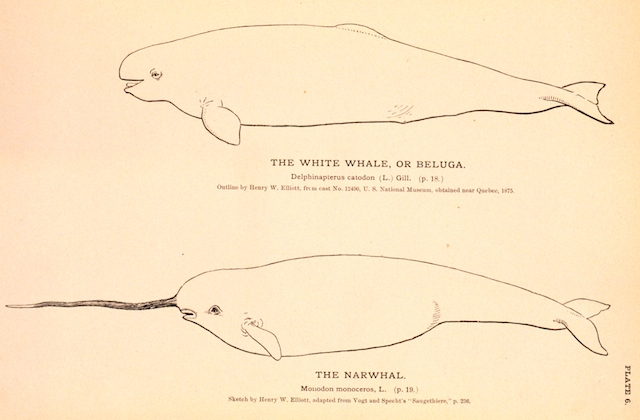
The Economist: What the narwhal’s tusk is really for
The Economist newspaper reported on the work of Trish Kelley, a PhD student in the Clayton H. Riddell Faculty of Environment, Earth, and Resources. Her work, which UM Today reported on, investigates the relationship between the size of a narwhal’s tusk and his testicles.
The article notes:
…The speculation circled back to Darwin last month when a team led by Trish Kelley of the University of Manitoba published research in Marine Mammal Science that indicates the tusk’s main purpose is to attract females and display male status, much like feathers on a peacock or antlers on a deer. The team arrived at this conclusion after measuring the length of tusks and the weight of testes on male narwhals caught in an 11-year period ending in 2008. It seems that narwhals with big tusks were also well endowed at the other end. One look at the tusk would alert females to what they could expect. The tusk as a symbol of virility fits with observations by Inuit, who hunt narwhal for food. (The vitamin C in narwhal skin and blubber helps ward off scurvy.) Inuit say males with the biggest tusks lead whale pods and that tusking displays, when two males rub their tusks together, appear more playful than aggressive. As for those broken tips, which some researchers took as evidence of fighting, they are probably caused by narwhals hitting the bottom in panicked flight from killer whales or human hunters, according to Inuit.
Is the science settled, then? “The fun thing about science is that nothing is ever really definitive,” says Ms Kelley. “You amass evidence to support the theory.” To that end, her team is planning new research into the relationship between testosterone levels, testes size and tusk length in the hope it will bolster their case. There are a surprising number of researchers working on various tusk theories. And it may be that more than one is true, says Ms Kelley. “I don’t want to say there is absolutely no other function that the tusk can serve because you are never really sure.” But the consensus is growing that Darwin was right: the male narwhal grows his spectacular tusk mainly to attract members of the opposite sex.
– See more at: http://www.economist.com/blogs/economist-explains/2014/10/economist-explains-3#sthash.nCzgJGad.dpuf






